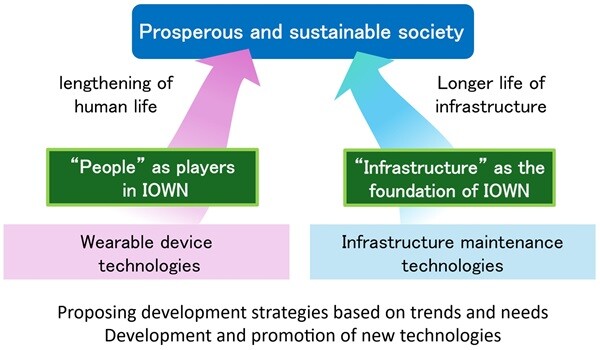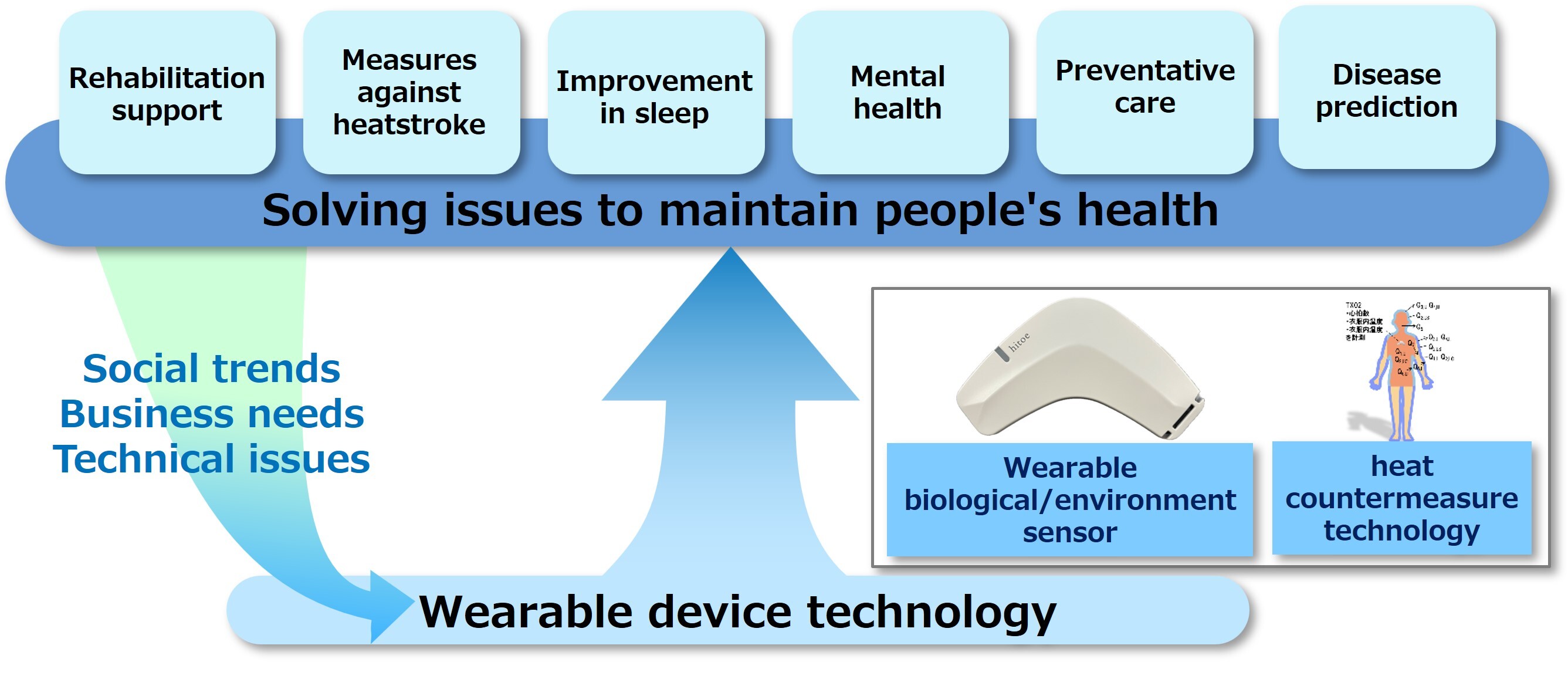Health&Environmental-Sensing Device Project
We are working to resolve social issues such as the aging of infrastructure facilities over time and the low-birthrate and aging population that constitute a warning about people's health. We aim to contribute to a prosperous and sustainable society by extending the lifespans of people and infrastructure. By leveraging our long-standing expertise in photonics, electronics, and materials science, we are developing practical technologies, which are infrastructure maintenance technologies that contribute to the maintenance of social infrastructure and wearable device technologies that expand the potential of the medical and healthcare fields. We also promote the dissemination of this technology and propose development strategies based on social and business trends and needs.

① Smart infrastructure maintenance technology
We are working to create sustainable infrastructure maintenance technologies, aiming to ensure safe and secure social infrastructure, including communications infrastructure that supports IOWN. Towards this goal, we are developing technologies to extend the lifespan of equipment by analyzing the degradation over time of their materials. In addition, we are developing tools to improve the efficiency of inspection and maintenance. For example, we have developed evaluation methods for selecting long-life paints and optimized the coating method (coating specification) for maintenance technology of steel communications towers. We are also working to improve the performance of zinc-rich paints (paints containing highly concentrated zinc powder) and to use lasers as a rust removal tool. We are developing technologies not only for steel towers, but also for facilities such as utility poles and underground facilities.
② Wearable device technology
In developing wearable device technologies, we aim to advance smart healthcare--an essential objective of the IOWN concept--to extend the healthy lifespans of people. We are developing next-generation wearable devices that integrate advanced sensing technology and medical IoT technology. We are also promoting widespread adoption of these technologies and formulating strategic plans based on emerging trends and societal needs through collaborations with industry, i.e., businesses both within and beyond the NTT Group., as well as with government and academic institutions. For example, we are developing wearable bio-environment sensors that automatically collect biometric data such as electrocardiograms and heart rate, as well as environmental parameters like temperature and humidity inside the wearer's clothing, and acceleration. Moreover, we are engaged in a wide range of medical and healthcare technology development, including a jointly developed algorithm (in collaboration with Nagoya Institute of Technology) that estimates internal temperature fluctuations from sensor data to assess and manage physical health risks.

